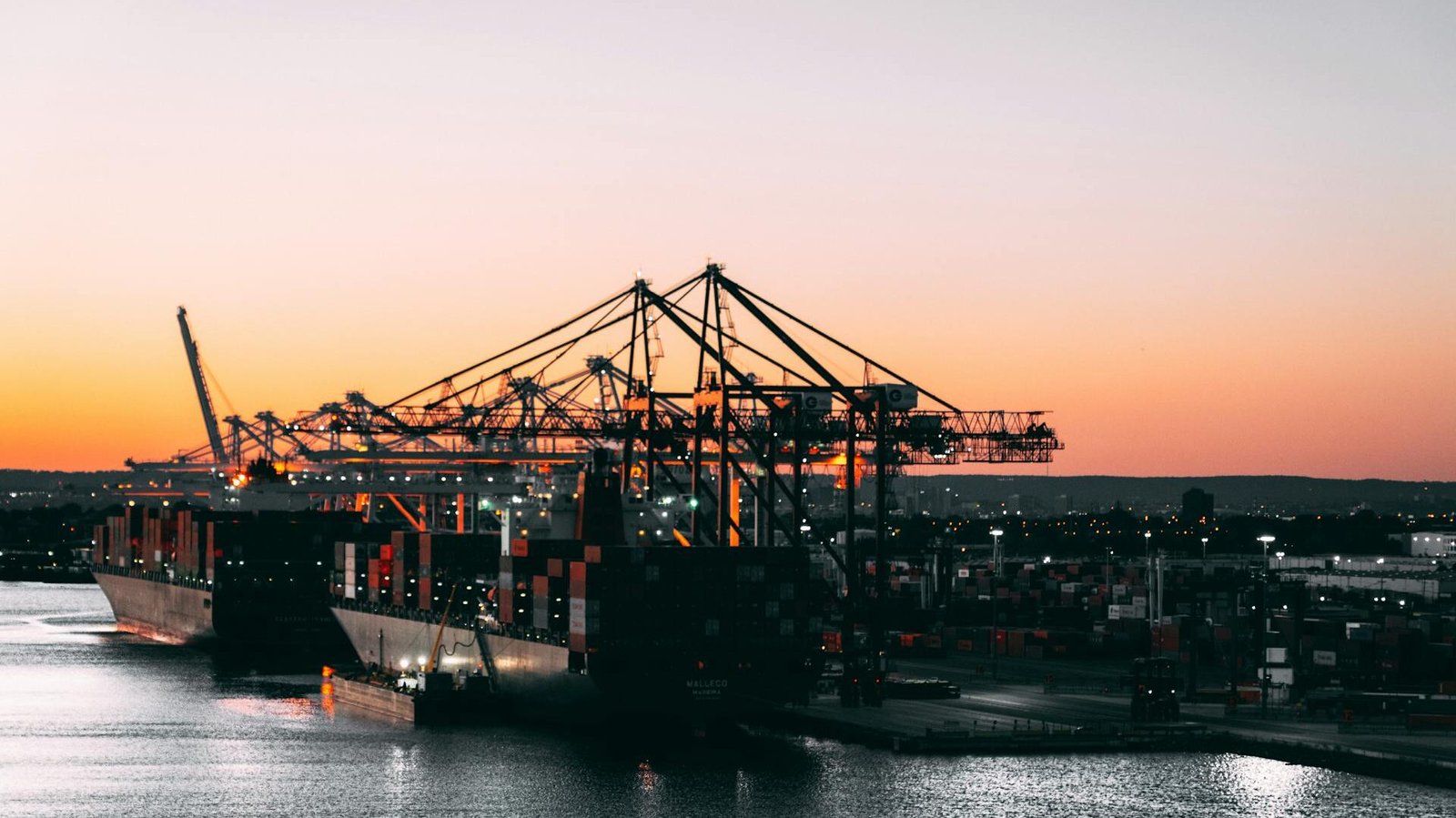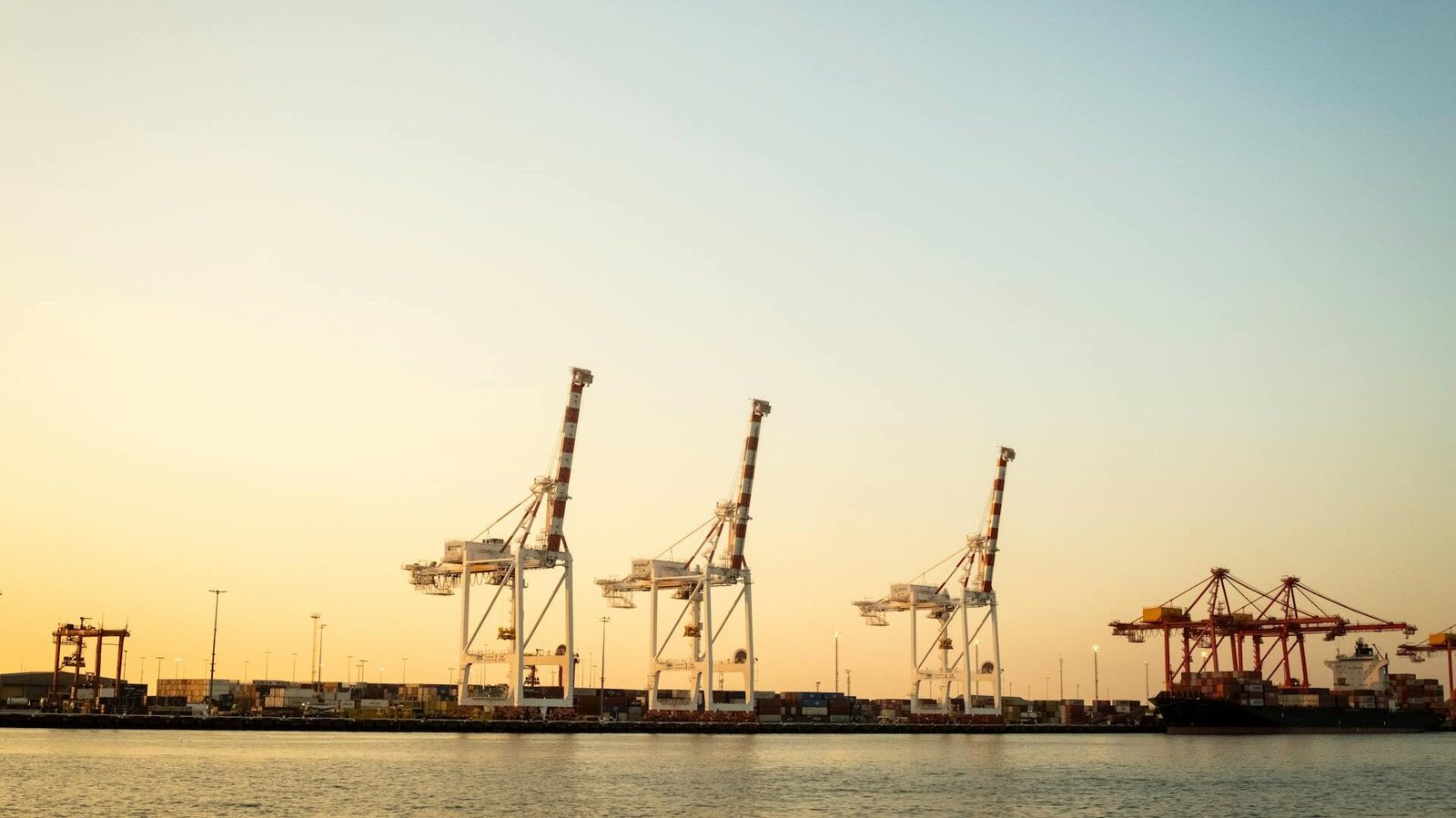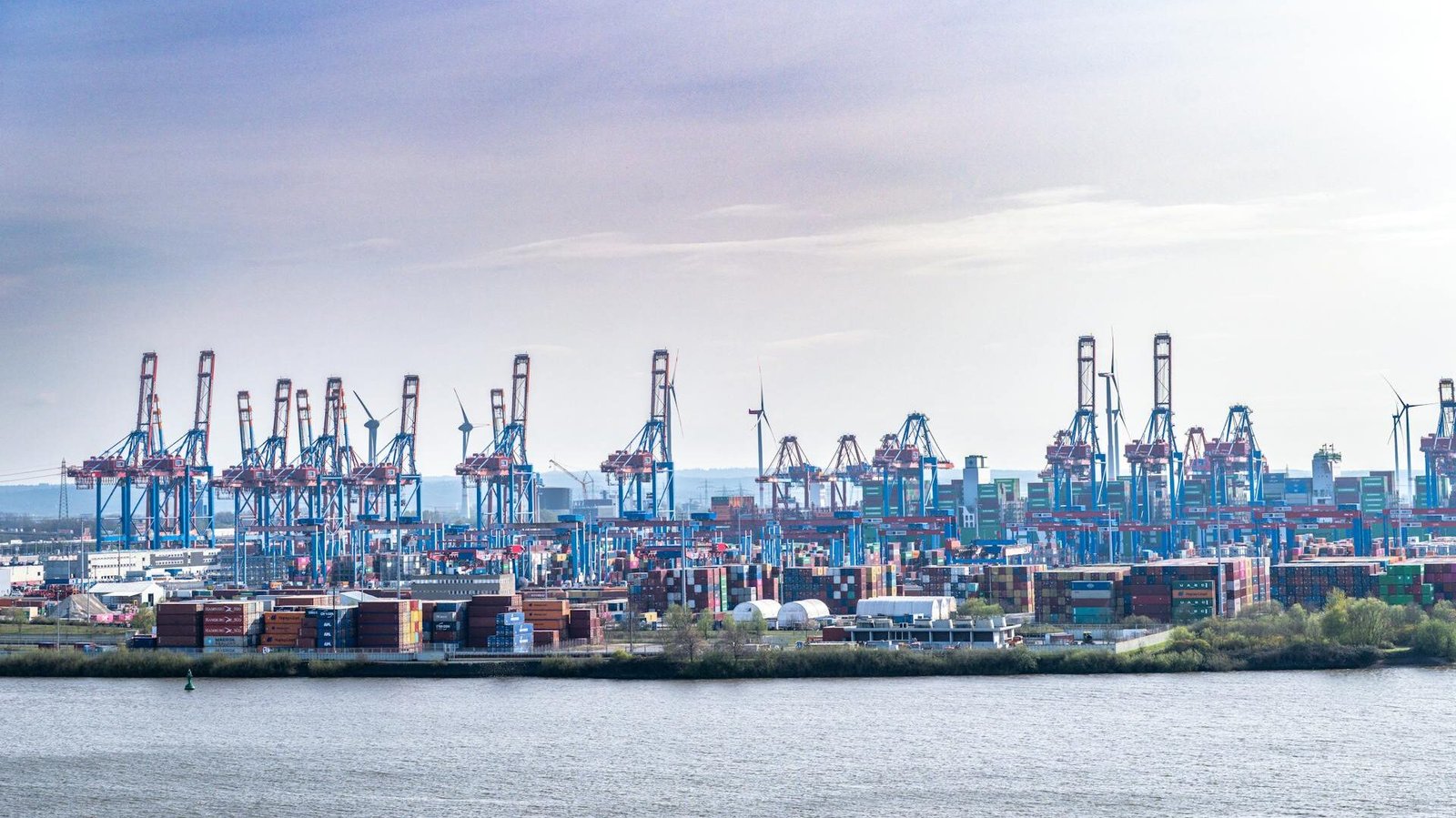
1. Introduction
“90% of the world’s traded goods travel by sea – making ocean cargo the backbone of global commerce.” Ocean cargo encompasses the transportation of both containerized and non – containerized goods via vessels across the world’s vast oceans. It stands as a cornerstone of international trade, facilitating the seamless movement of a diverse array of products from one end of the globe to the other. The purpose of this guide is to comprehensively cover every aspect related to ocean cargo, from costs and service types to documentation and future trends, enabling you to make well – informed shipping decisions.
2. Why Ocean Cargo? Key Advantages
Cost Efficiency
Ocean cargo is a highly economical option, especially for transporting heavy or bulk shipments. It typically costs 4 – 6 times less than air freight. For businesses dealing with large – scale transportation of goods, this significant cost difference can lead to substantial savings in their logistics budgets. For instance, a company shipping large quantities of raw materials can significantly cut down on transportation expenses by opting for ocean cargo.
Eco – Friendliness
In an era where environmental sustainability is a pressing concern, ocean cargo has a distinct advantage. It has the lowest carbon footprint per ton – mile compared to other modes of transportation. According to industry reports, for long – distance bulk shipping, ocean vessels emit far fewer greenhouse gases per unit of cargo carried. This makes it an attractive choice for companies aiming to reduce their environmental impact and meet sustainability goals.
High Capacity
Ocean cargo can handle a wide range of cargo, including oversized machinery, large volumes of raw materials, and a high number of containers. Modern container ships can carry over 20,000 Twenty – Foot Equivalent Units (TEU). This high capacity allows for the efficient transportation of large – scale industrial equipment, such as heavy machinery and large – sized components, which would be extremely challenging to move by other means.
Global Reach
With the ability to connect 90% of the world’s ports, ocean cargo offers unparalleled global reach. It enables businesses to access markets in every corner of the world, whether it’s a remote island or a major industrial hub. This extensive network makes it possible for companies to source materials from different regions and distribute their products globally, thereby expanding their business horizons.
3. Ocean Cargo Service Types Explained
FCL vs LCL
Full Container Load (FCL)
FCL is ideal for shipments of 10 or more pallets. When choosing FCL, the shipper has exclusive use of a container. One of the main benefits is a faster transit time, as the container is not subject to the additional handling and consolidation processes associated with less – than – container – load shipments. Additionally, there is a lower risk of damage to the cargo since it is not mixed with other goods.
Less than Container Load (LCL)
LCL is a great option for small and medium – sized enterprises (SMEs) or those with smaller shipments. It allows shippers to share the cost of a container, making it more affordable. However, LCL shipments usually require longer processing times at consolidation hubs, as the cargo needs to be grouped with other shipments before being loaded onto the vessel.
Specialized Services
There are also specialized ocean cargo services available. Refrigerated (Reefer) containers are used for transporting perishable goods, such as fresh produce, dairy products, and pharmaceuticals, which require a controlled temperature environment. Roll – on/Roll – off (RO – RO) services are suitable for vehicles and machinery that can be driven on and off the vessel. Bulk carriers are designed to transport large quantities of unpackaged dry goods, like grains, coal, and ores.

4. Step – by – Step Ocean Cargo Shipping Process
Export Haulage
The first step in the ocean cargo shipping process is export haulage. Here, the goods are transported by truck from the shipper’s location to the origin port. This initial stage is crucial for ensuring that the cargo arrives at the port on time and in good condition, setting the foundation for a smooth shipping process.
Origin Handling
At the origin port, the cargo undergoes customs clearance and loading onto the vessel. Customs clearance involves submitting the necessary documentation and ensuring that the goods comply with all relevant regulations. Loading is carried out by trained personnel using specialized equipment to ensure the safe and efficient placement of the cargo on the ship.
Ocean Transit
Once the vessel sets sail, the ocean cargo is in transit across the ocean. During this time, it is essential to have a reliable means of tracking the shipment. Many shipping companies offer real – time tracking services, which use GPS technology to provide up – to – date information on the vessel’s location and estimated time of arrival.
Destination Handling
Upon arrival at the destination port, the ocean cargo is unloaded and undergoes inspections. These inspections are to ensure that the goods meet the destination country’s customs and regulatory requirements. Any discrepancies or issues identified during the inspection can lead to delays or additional charges.
Import Haulage
Finally, the ocean cargo is transported by truck from the destination port to the final warehouse or customer location. This last leg of the journey is essential for getting the goods to their intended destination in a timely manner, completing the shipping process.
A simplified flowchart of this process would look like this:
Export Haulage → Origin Handling → Ocean Transit → Destination Handling → Import Haulage
5. Cost Breakdown of Ocean Cargo
Base Charges
The base charges for ocean cargo are typically calculated based on the freight rates per container or pallet. These rates can vary depending on multiple factors, such as the origin and destination ports, the type of cargo, and the shipping season.
Surcharges
There are several common surcharges in ocean cargo shipping. The Bunker Adjustment Factor (BAF) is related to fuel price fluctuations. As fuel costs are a significant part of the shipping company’s expenses, the BAF is adjusted regularly to reflect changes in fuel prices. The Currency Adjustment Factor (CAF) takes into account currency exchange rate fluctuations. Terminal Handling Charges (THC) are fees for the handling of the cargo at the ports. Peak Season Surcharges (PSS) are applied during periods of high demand, such as the holiday season.
Hidden Costs
In addition to the base charges and surcharges, there can be hidden costs in ocean cargo shipping. Demurrage is a fee charged when the cargo stays at the port for longer than the allotted free time. Detention fees are for the extended use of shipping containers. It is also important to consider the cost of cargo insurance, which protects the shipper against potential losses during transit. A pro tip is to always request ALL – IN quotes to avoid unexpected costs.
6. Critical Documentation for Ocean Cargo
Bill of Lading (B/L)
The Bill of Lading is one of the most important documents in ocean cargo shipping. It serves as a contract between the shipper and the carrier, as well as a receipt for the cargo. There are two main types: telex release and original B/L. A telex release allows the consignee to take possession of the cargo without presenting the original B/L, which can be more convenient for urgent shipments.
Commercial Invoice
The Commercial Invoice is used to declare the value of the ocean cargo for customs purposes. It provides detailed information about the goods, including their description, quantity, and price. This document is crucial for determining the amount of duties and taxes payable.
Packing List
The Packing List itemizes the contents of each package in the ocean cargo shipment. It helps customs officials and the carrier to verify the quantity and nature of the cargo. An accurate packing list is essential for smooth customs clearance.
Certificate of Origin
The Certificate of Origin is proof of where the ocean cargo was produced. It is used to determine the eligibility for certain trade agreements and duty – free treatment. Errors in these documents are known to cause approximately 30% of shipping delays, so it is vital to ensure their accuracy.

7. Choosing a Freight Partner for Ocean Cargo
5 Selection Criteria
Global Network Coverage
A good freight partner for ocean cargo should have a global network with access to key ports. This ensures that they can handle shipments to and from any part of the world efficiently, providing comprehensive coverage for your shipping needs.
Digital Tools
Digital tools are becoming increasingly important in ocean cargo shipping. A freight forwarder with real – time tracking capabilities and electronic Bill of Lading (e – B/L) services can provide greater visibility and transparency throughout the shipping process, enabling you to stay informed at all times.
Compliance Expertise
Compliance with international regulations is crucial in ocean cargo shipping. A reliable freight partner should have in – depth knowledge of regulations such as the International Safety Management (ISM) Code and the Safety of Life at Sea (SOLAS) Convention, ensuring that your shipments are in full compliance.
Transparent Pricing
Transparent pricing is essential to avoid hidden fees in ocean cargo shipping. A freight forwarder should provide clear and detailed quotes, including all costs and surcharges, so you can accurately budget for your shipping expenses.
Sustainability Initiatives
With the growing emphasis on sustainability, it is important to choose a freight partner that is committed to environmental initiatives. For example, a company that is working towards compliance with the International Maritime Organization (IMO) 2030 emissions reduction targets, contributing to a greener future for ocean cargo.
When choosing a freight partner, you can ask them, “Can you handle LCL consolidation of ocean cargo from Shanghai to Rotterdam?”
8. Overcoming Challenges in Ocean Cargo Shipping
Common Issues
Port Strikes/Weather Disruptions
Port strikes and adverse weather conditions can cause significant disruptions to ocean cargo shipping. To mitigate these risks, it is advisable to buffer an additional 15% of transit time in your shipping schedule, allowing for some flexibility in case of unforeseen events.
Customs Holds
Customs holds can occur due to various reasons, such as incomplete documentation or non – compliance with regulations. Hiring local customs brokers who are familiar with the destination country’s customs procedures can help to resolve these issues more quickly, minimizing delays in ocean cargo shipping.
Container Shortages
Container shortages can be a major problem, especially during peak seasons. To avoid delays, it is recommended to book your containers 4 – 6 weeks in advance, ensuring the availability of containers for your ocean cargo.
Solutions
There are several solutions to these challenges in ocean cargo shipping. GPS tracking can provide real – time information on the location of the shipment, allowing for better planning and response to any disruptions. Cargo insurance protects the shipper against potential losses due to damage, theft, or delays. Diversifying shipping routes can also reduce the impact of port – specific issues, such as congestion or strikes.
9. Future Trends of Ocean Cargo (2024 – 2030)
Digitalization
The future of ocean cargo is likely to be characterized by increased digitalization. AI – based route optimization can help shipping companies to find the most efficient routes, reducing fuel consumption and transit time. Blockchain technology can be used for the secure and transparent management of B/Ls, eliminating the need for paper – based documents and reducing the risk of fraud.
Green Shipping
Green shipping initiatives are also on the rise in ocean cargo. Biofuels are being explored as an alternative to traditional fossil fuels, and carbon – neutral vessels are being developed. For example, Maersk has introduced a methanol – powered fleet, which has the potential to significantly reduce greenhouse gas emissions in ocean cargo shipping.
Regulations
The International Maritime Organization (IMO) has set a target of a 30% reduction in emissions by 2030. This will drive the ocean cargo industry to adopt more sustainable practices and technologies, ensuring a more environmentally friendly future.
Market Shifts
Nearshoring trends are also expected to have an impact on ocean cargo, particularly on Asia – Europe lanes. As companies look to reduce supply chain risks by moving production closer to their markets, the demand for shipping on these routes may change, shaping the future landscape of ocean cargo.
10. Conclusion
In conclusion, ocean cargo remains the most scalable and economical solution for global trade. It offers a wide range of services and has the capacity to handle large – scale shipments. To ensure a smooth and efficient shipping process, it is recommended to combine the use of digital tools with the expertise of reliable freight partners. This will provide end – to – end visibility and help to overcome the various challenges in ocean cargo shipping.





